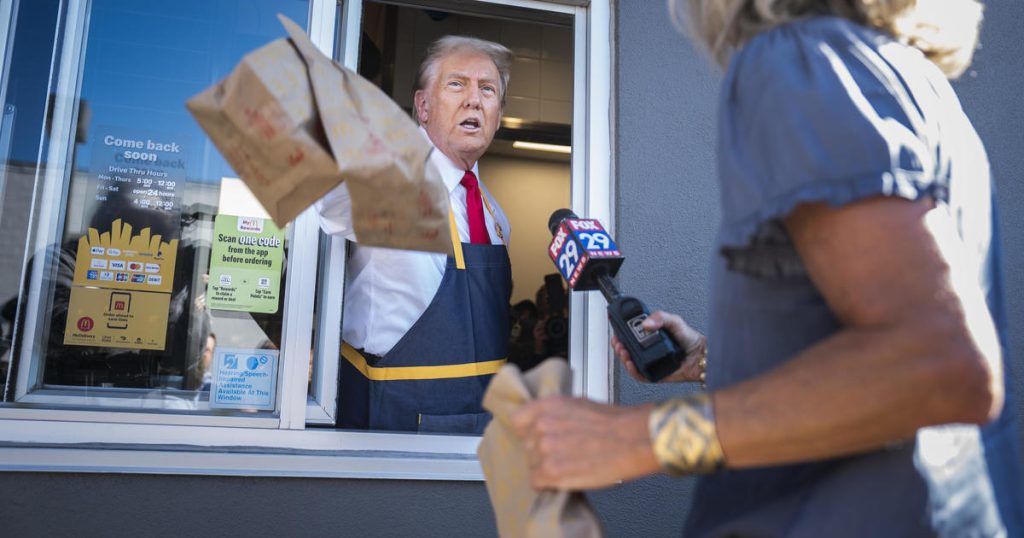The federal minimum wage of $7.25 an hour has not changed since 2009, leading to a 47% surge in the cost of living since then. Half of the eight battleground states in the U.S. presidential election use this minimum wage, causing minimum-wage workers in those states to see much of their purchasing power eroded by inflation over the past 15 years. Donald Trump’s recent visit to a McDonald’s in Pennsylvania and subsequent comments on the minimum wage have reignited public attention on how low-income workers are compensated. Trump did not directly address whether he thinks the minimum wage should be raised during his visit.
Vice President Kamala Harris has expressed a desire to increase the nation’s minimum wage and the sub-minimum wage earned by tipped workers. Both Trump and Harris have suggested eliminating income taxes on tips to help boost earnings for people in the hospitality industry. While the federal minimum wage has been stagnant since 2009, 30 states have taken steps to raise wages for their lowest-earning workers, leaving 20 states still paying the federal baseline wage of $7.25 an hour, equating to annual earnings of $15,000. Many of these states are in the South and Midwest, including battleground states like Georgia, North Carolina, Pennsylvania, and Wisconsin.
Experts warn that workers in states with lower minimum wages are at risk of falling behind those in states with higher minimum wages. Some advocate for increasing the minimum wage, citing the fact that $7.25 an hour is considered a poverty wage that is detrimental to both workers and businesses alike. The focus on worker pay comes amid polling that shows many Americans continue to struggle financially, with a majority feeling worse off than four years ago. Rising inflation and stagnant wages have contributed to this financial strain, prompting some states to raise their minimum wages to keep up with the cost of living.
If the federal minimum wage had been adjusted for inflation, it would currently stand at $10.61 per hour. Some battleground states have already increased their minimum wage to around this level or higher, including states like Arizona, Michigan, Nebraska, and Nevada. In contrast, states like Pennsylvania have not raised their minimum wage, causing minimum-wage workers to lose ground relative to workers in the middle of the wage distribution. As the economy continues to face challenges related to inflation and wage stagnation, the issue of raising the minimum wage remains a key topic of debate among policymakers and advocates.
The disparities in minimum wage policies across states highlight the challenges faced by low-income workers in certain regions of the country. Despite calls for raising the federal minimum wage and adjusting it for inflation, progress has been slow in implementing these changes nationwide. The outcome of the U.S. presidential election could have implications for the future of minimum wage policies and the financial well-being of millions of workers across the country. Advocates continue to push for higher wages and better working conditions for low-income workers, emphasizing the need for equitable pay and economic security for all Americans.















